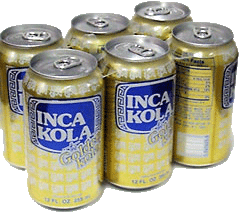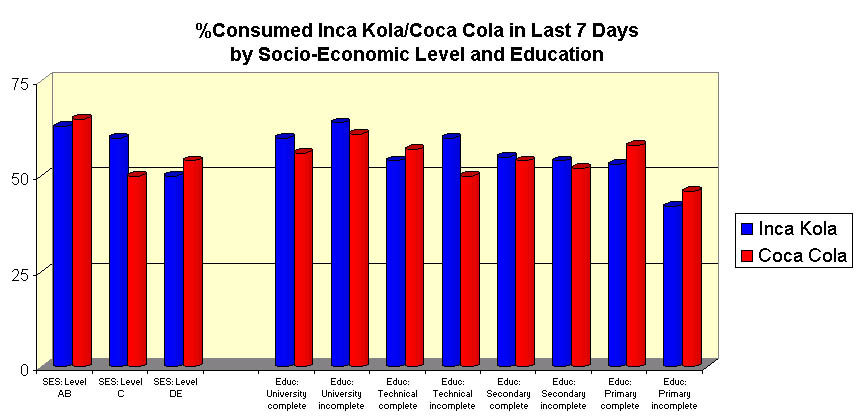
Peru, Land of Inca Kola

In the age of globalization, most product categories are dominated by global brands with the manufacturing, distributing and marketing powers in most countries. Occasionally, there are pockets of local resistance, where it is a matter of tradition and pride to prefer an essentially local product. Such is the case of the soft drink known as Inca Kola in Peru.
Less than one hundred years ago, the Lindley family arrived from Great Britain to Lima Peru, and began producing soft drinks. In the beginning, the production was carried out by manually at the average rate of one minute per bottle of Inca Kola. In 1918, the family purchased their first semi-automatic machine and improved their productivity to 15 bottles per minute. In 1928, the family formed the company known as Fábrica de Aguas Gasificadas "Santa Rosa" de José R. Lindley e Hijos S.A. In 1935, on the occasion of the four hundred year centenary of the founding of the city of Lima, the company introduced the carbonated soft drink Inca Kola. The product launch made use of all the advertising media available at the time, with the slogan "Inca Kola solo hay una y no se parece a ninguna." In 1948, the company purchased its first completely automated machine and increased production to 36 bottles per minute. By the 1970's, Inca Kola could be found everywhere in Peru, as befits a product that was positioned as a national product from the beginning, with advertising slogans such as "Es Nuestra" and "De Sabor Nacional." These days, Inca Kola can be found all over the world.
We will now cite some survey data from the TGI Peru study. This is a survey of 1,500 persons between the ages of 12 to 64 years old interviewed in Lima during the first half of 2002. According to this survey, 56% of the people said that they drank Inca Kola in the last 7 days whereas 54% said that they drank Coca Cola in the last 7 days. This is a virtual dead heat, which is impressive as Coca Cola is the clear category leader in most other Latin American countries.
In the next chart, we show the incidences by age/sex groups. The largest advantages for Inca Koca are for Males 20-24 and Females 55-65, whereas the largest advantages for Coca Cola are for Males and Females 25-34.

In the next chart, we show the incidences by socio-economic level and educational level. The most obvious advantage for Inca Kola occurs for the middle class (Level C). We note that the relationship between Inca Kola and Coca Cola is not one of antagonistic competition, since the two companies signed a joint venture agreement in February 1999.

(posted by Roland Soong, 01/26/2003)
(Return to Zona Latina's Home Page)